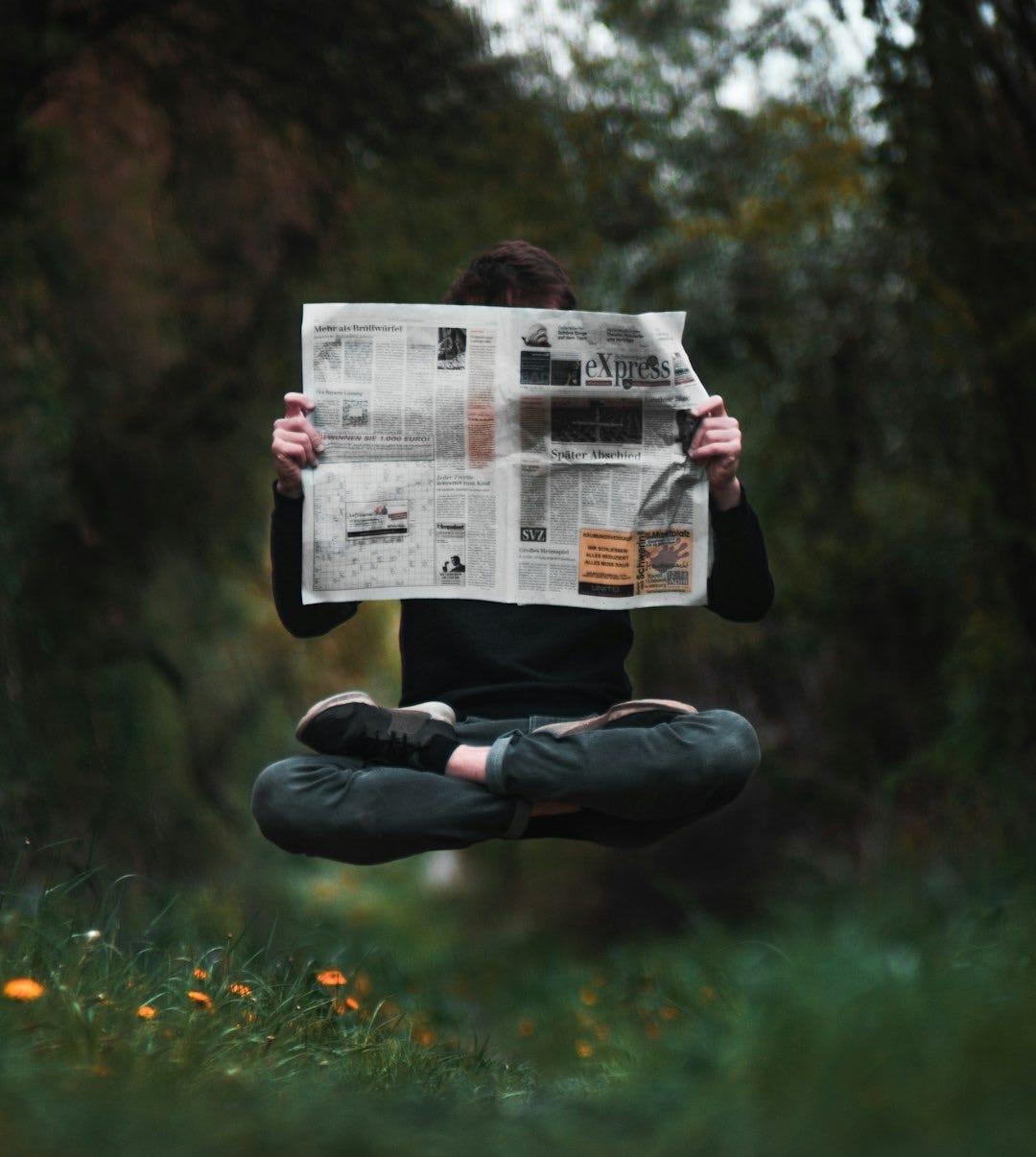How to Filter 'Noise' From 'News'
Science-Based Techniques to Empower Discovery (And Save Time)
Housekeeping: Today’s article includes bonus content for paid subscribers. Please upgrade to benefit from additional insights and bonus content.
📌 The Quick Hit:
Most “news” is noise. Urgent-sounding but useless information engineered to capture your attention and steal your time.
Real news is the tiny fraction that changes your decisions or leads to meaningful discovery.
This piece outlines a practical, science-backed method to filter signal from noise so you can think clearly, protect your time, and stay focused on what actually matters.
It also includes 10 science-based rules, created especially for paid subscribers.
💡 The Epiphany That Changed Everything
A few years into my investment career, I did something counterintuitive:
I stopped reading so much news.
At the time I was working in the international division of a major investment advisory firm. My workday began at 5:00am. The first 30–45 minutes were spent “getting informed,” scanning headlines across multiple outlets.
But as the volume of content skyrocketed, I became overwhelmed, anxious, and mentally scattered.
So I changed my morning routine.
I started each day quietly - reading a devotional, prayer, and 10–15 minutes of focused skill-building (one season it was improving my typing speed). Only after that grounding did I allow a window for “information.”
This shift didn’t just calm my mind.
It transformed how I processed news.

👉 A Better Way to Digest Information
Instead of jumping between hyper-reactive news sites (you know the names), I started relying on aggregated headlines - a more neutral collection point. There are many sites that aggregate news from multiple sources (e.g., Finviz) - legacy media, digital outlets, left, right, and center - without the emotional packaging.
I’d give myself 10–15 minutes to skim every headline.
Patterns began to emerge:
Some headlines were recycled from two days ago.
Some were emotional bait.
Some contradicted basic facts.
A rare few were worth my time.
And I adopted a personal rule: I don’t click unless the headline is genuinely actionable.
Once I stopped treating all information as equal - and instead filtered for discovery or decision-making - my days felt lighter, my thinking clearer, my work sharper.
🎧 Noise vs. News
Here’s the simplest distinction:
Noise → Information that feels urgent but has no predictive or practical value.
News → Information that changes your decisions or leads to genuine discovery.
A single question can filter 80% of content:
“Does this change anything I’m responsible for?” or simply put, “Is this my business?”
If not, it’s noise.
Noise evaporates the moment you stop looking at it.
News, on the other hand, has weight. It lingers. It makes you ask,
What does this mean for me?
What action might this require?
That’s the difference.
‼️ Why So Much Information Feels Urgent (But Isn’t)
Media has one job: Capture your time. Not just your attention - your time.
Time is the gateway to loyalty, trust, and eventually money. And fear is the most reliable hook in human psychology.
So modern media does three things:
Create drama (to capture attention)
Trigger emotion (to keep you reading)
Refresh the drama repeatedly (to stay “breaking”)
The problem?
Information decays quickly. Once widely known, it loses both economic relevance (priced into markets) and psychological relevance (we adapt).
Noise decays almost instantly.
News persists.
Understanding the difference is a competitive advantage.
That’s why I started using a combination of the following science-backed filtering tools.
Keep reading with a 7-day free trial
Subscribe to The Other Side of Obvious to keep reading this post and get 7 days of free access to the full post archives.

